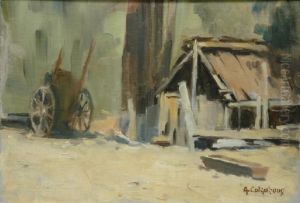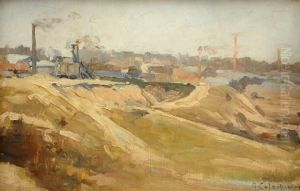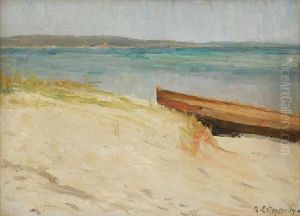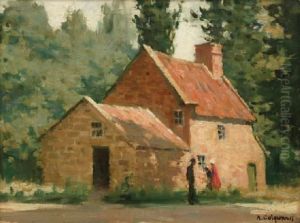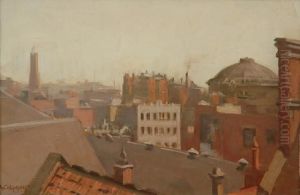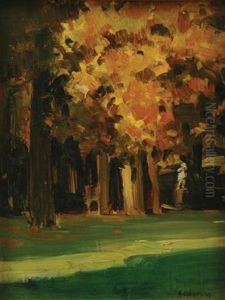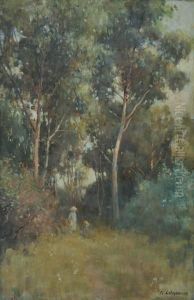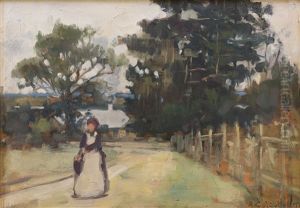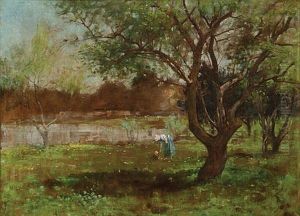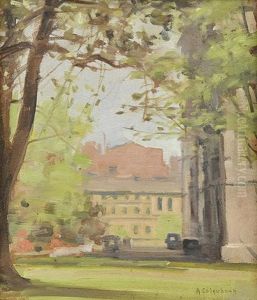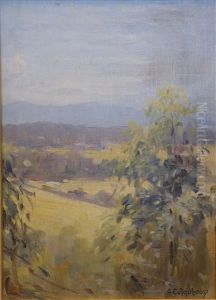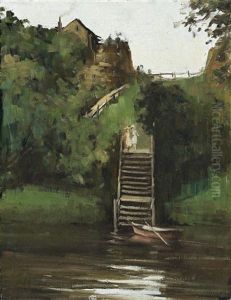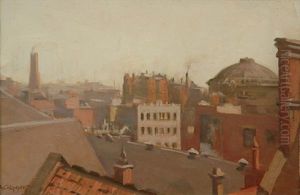Alexander Colquhoun Paintings
Alexander Colquhoun was a Scottish-born Australian artist known for his painting, etching, and teaching. Born on August 18, 1862, in Glasgow, Scotland, Colquhoun immigrated to Australia with his family in 1879, where they settled in Melbourne. His artistic journey began at the National Gallery of Victoria Art School, where he studied under the tutelage of George Folingsby, a respected artist and teacher of the time.
Colquhoun's work was influenced by the Heidelberg School, a movement in Australian art that sought to depict the Australian landscape in a naturalistic manner, reminiscent of the Impressionist style. Although not considered a core member of this group, Colquhoun's art was nevertheless shaped by the movement's emphasis on light, color, and the Australian environment.
Throughout his career, Colquhoun became known for his landscapes and marine scenes. His etchings and paintings often captured the raw beauty of Australia's coasts and bushland with a particular focus on the effects of sunlight and shadow. Colquhoun exhibited his work at various institutions, including the Victorian Artists Society and the Australian Artists Association, and gained a reputation as an accomplished artist in his own right.
In addition to his painting and etching, Colquhoun was also dedicated to the education of future artists. He taught at the National Gallery of Victoria Art School, where he had once been a student, and later at the Working Men's College, now known as the Royal Melbourne Institute of Technology (RMIT University). His commitment to teaching allowed him to influence a generation of Australian artists, leaving a lasting legacy in the Australian art community.
Alexander Colquhoun's life was one of artistic endeavor and education until his death on May 6, 1941. His works continue to be appreciated for their contribution to the Australian art scene and are held in collections both in Australia and internationally.
